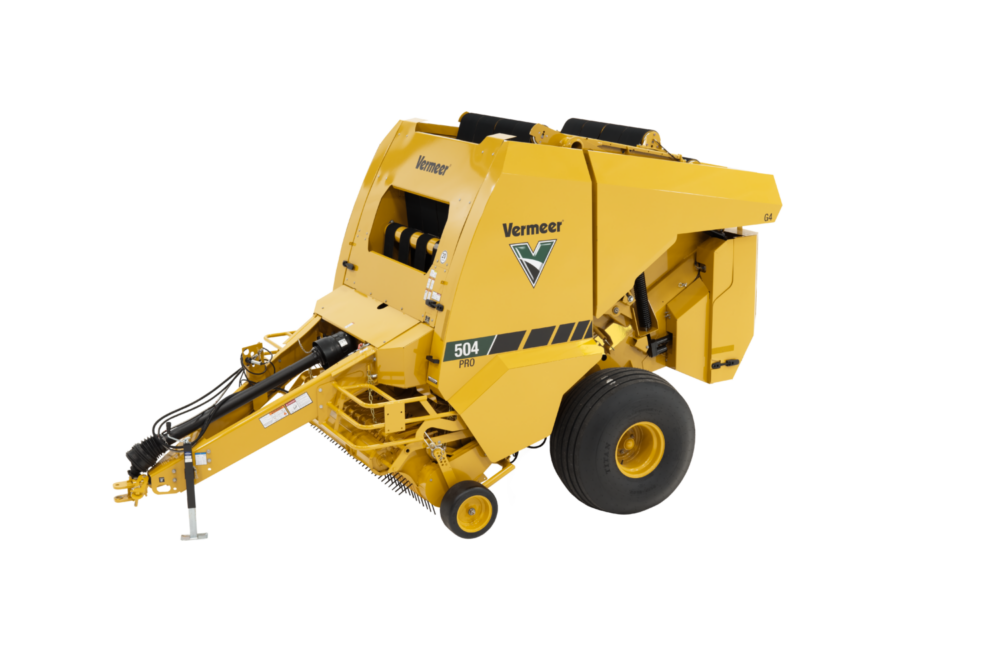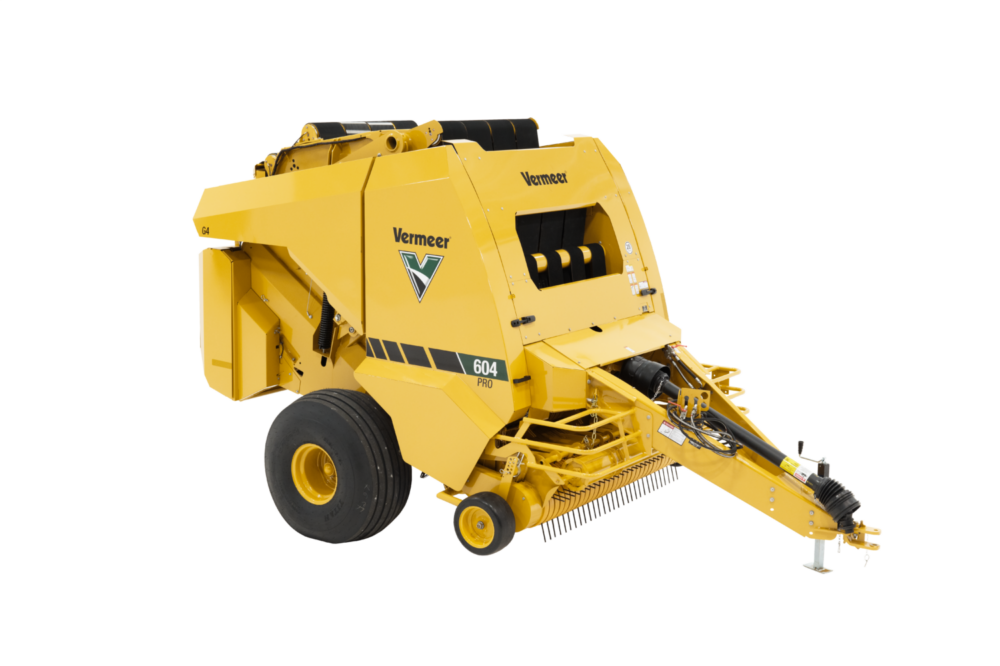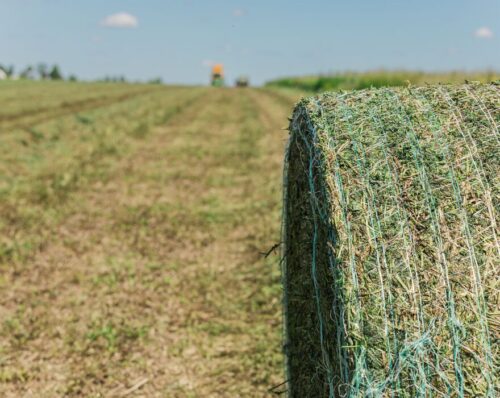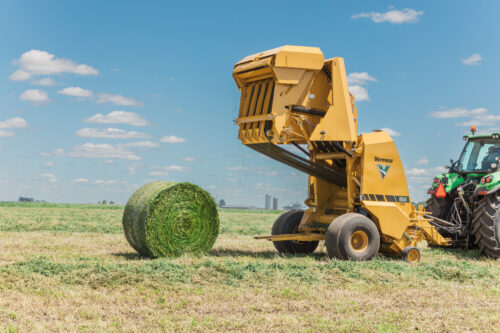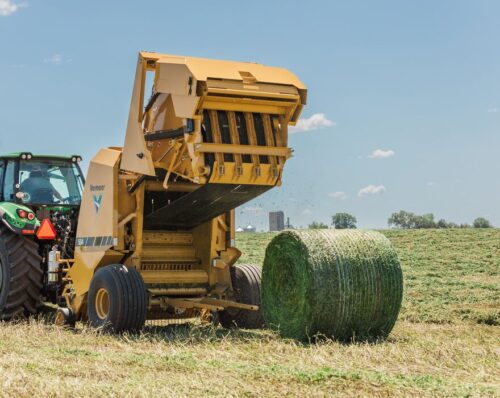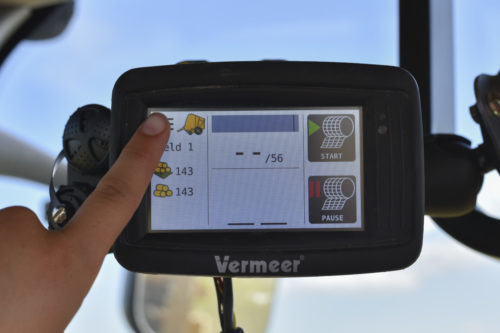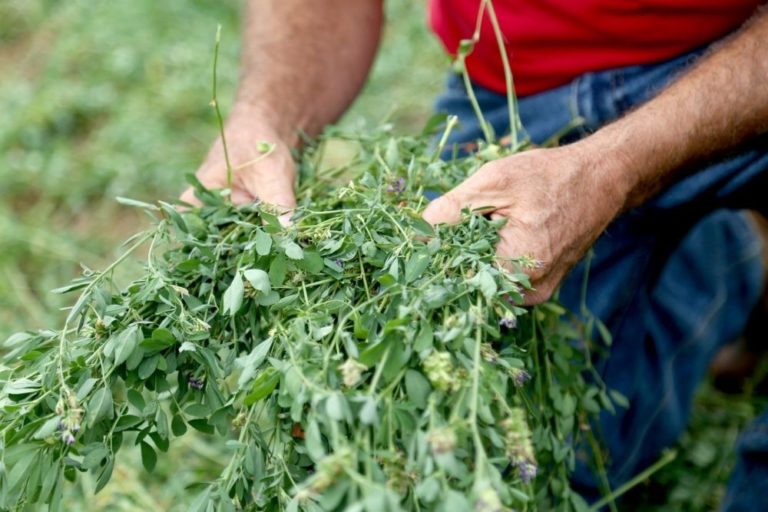
The Story on Making Silage Bales
April 2022
For years hay producers have obsessed over weather forecasts, with impending rain threatening the freshly cut hay drying in their fields. After all, nothing is more detrimental to making hay than moisture, right? But what if moisture could actually be beneficial? That’s where silage comes in.
Can you bale wet hay?
Silage is comprised of grasses or other crops that are cut, fermented and compressed until they’re ready to be fed to livestock. Silage is an increasingly popular alternative for haymakers in traditionally wetter regions who have found it difficult — if not impossible — to consistently make dry hay.
That was the case for Steve Riley of Deputy, Indiana. For years, he tried to make dry hay for his cattle, only to be thrown off course by Mother Nature time and time again. Finally, he decided to shift course entirely and use moisture to his advantage.
“A lot of people call (this) God’s country, but it’s very hard to make dry hay here,” Riley said. “It can happen, but the windows of opportunity seem to be so short anymore that we just can’t seem to get anything done. Wet hay is something we’ve been playing with for the last 20 years. Now we’re pretty much 100% wet hay.”
Riley isn’t alone in this line of thinking. The silage movement has its roots in the Midwest and Northeast, where producers have come to expect shorter periods of time between rainfalls. Generally, making dry hay requires approximately five days of dry conditions between harvesting and baling — a tall order for these parts of the US.
“The process of trying to hit the window to get enough dry days to get the hay dry and get it right is very hard,” Riley said. “But, with wet hay, we’re pretty much 24 hours from the time we cut hay until it’s wrapped up in a tube and done. There’s no battle. You just cut it, break it and bale it.”
The silage-making process is much more flexible than the dry haymaking process. Plus, it allows you to cut the crop when it’s at its highest quality, rather than having to wait for dry weather and sacrifice the quality of the product. That quality translates to better feed efficiency, which leads to better gain in beef cattle and increased milk production in dairy cattle. Silage is a solid solution for maximizing forage quality.
Silage vs. hay
A plant’s leaves hold most of its protein content. Since there is typically less leaf loss with wet forage, the crude protein of silage tends to be higher. It’s also more palatable for cows and they rarely leave any silage behind — where you’re likely to see more material loss with dry hay bales. Take a look at an experiment Vermeer did with feeding heifers dry hay vs. silage to see firsthand which they preferred.
The advantages of baling silage go beyond convenience in process and gains in production. The actual process of making silage also results in better yields. According to research from the University of Wisconsin, for each day alfalfa is driven over after it’s mowed, producers lose an average of 6% yield on the next cutting. Therefore, if you leave hay in the field to dry for five days, you can expect up to a 30% loss in yield on the next crop.
Silage can be made with anywhere from 25% to 65% moisture content. The key is getting the material wrapped in a timely manner (ideally less than 24 hours after mowing), so its oxygen supply is cut off and fermentation can occur.
During fermentation lactic acid is produced, which acts as a preservative for the wrapped bales. Once a bale is opened and exposed to oxygen, quality changes can occur. So, the sooner it can be fed, the better.
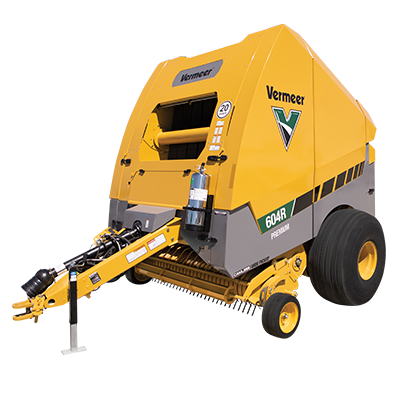
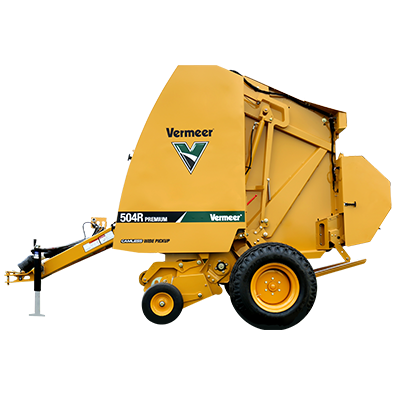
Choosing the right silage baler
When making the switch to baling silage, it’s important to use hay and forage tools that are designed for the task. Certain Vermeer round balers, like the 504R Premium and 604R Premium, can get the jobdone. To find the right baler for your operation, here are some things to discuss with your dealer:
 The percentage of your crop that is going to be silage.
The percentage of your crop that is going to be silage.
 How dense of a bale a specific baler can make. Silage bales should be very dense to keep oxygen out and aid fermentation.
How dense of a bale a specific baler can make. Silage bales should be very dense to keep oxygen out and aid fermentation.
 Which can handle the added weight and other challenges that come with baling a wetter crop? Silage bales can weigh up to 2,500 pounds — more than twice as heavy as typical hay bales.
Which can handle the added weight and other challenges that come with baling a wetter crop? Silage bales can weigh up to 2,500 pounds — more than twice as heavy as typical hay bales.
 Does the baler have a pre-cutter system to trim full-length hay for feeding efficiency?
Does the baler have a pre-cutter system to trim full-length hay for feeding efficiency?
 Which balers have a drop floor? Silage can plug a baler more than dry crops, particularly if the baler isn’t designed to handle wet material. A drop floor will allow you to efficiently unplug the baler from the cab.
Which balers have a drop floor? Silage can plug a baler more than dry crops, particularly if the baler isn’t designed to handle wet material. A drop floor will allow you to efficiently unplug the baler from the cab.
Talk to your Vermeer dealer to learn more about the benefits of baling silage, from improved efficiency to boosted nutrition for your animals — and don’t forget about the ability to break free from the weather forecast. Take it from Steve Riley. “I don’t really even listen much to the weather anymore. If we’ve got a few days straight (of dry weather), or even 24 hours, I’m cutting hay,” Riley said.

